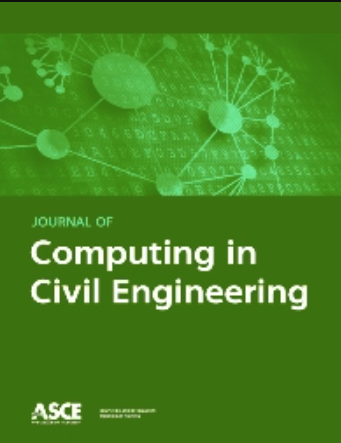Point Cloud–Based Concrete Surface Defect Semantic Segmentation
IF 4.7
2区 工程技术
Q1 COMPUTER SCIENCE, INTERDISCIPLINARY APPLICATIONS
引用次数: 2
Abstract
Visual inspection is one of the main approaches for annual bridge inspection. Light detection and ranging (LiDAR) scanning is a new technology, which is beneficial because it collects the point clouds and the third dimension of the scanned objects. Deep learning (DL)-based methods have attracted researchers’ attention for concrete surface defect detection. However, no point cloud–based DL method currently is available for semantic segmentation of bridge surface defects without converting the data set into other representations, which results in increasing the size of the data set. Moreover, most of the current point cloud–based concrete surface defect detection methods focus on only one type of defect. On the other hand, a data set plays a key role in DL. Therefore, the lack of publicly available point cloud data sets for bridge surface defects is one of the reasons for the lack of studies in this area. To address these issues, this paper created a publicly available point cloud data set for concrete bridge surface defect detection, and developed a point cloud–based semantic segmentation DL method to detect different types of concrete surface defects. Surface Normal Enhanced PointNet++ (SNEPointNet++) was developed for semantic segmentation of concrete bridge surface defects (i.e., cracks and spalls). SNEPointNet++ focuses on two main characteristics related to surface defects (i.e., normal vector and depth) and considers the issues related to the data set (i.e., imbalanced data set). The data set, which was collected from four concrete bridges and classified into three classes (cracks, spalls, and no defect), is made available for other researchers. The model was trained and evaluated using 60% and 20% of the data set, respectively. Testing on the remaining part of the data set resulted in 93% and 92% recall for cracks and spalls, respectively. Spalls of the segments deeper than 7 cm (severe spalls) can be detected with 99% recall.基于点云的混凝土表面缺陷语义分割
目测检查是桥梁年检的主要方法之一。光探测与测距(LiDAR)扫描是一项新的技术,它可以收集点云和被扫描物体的三维特征。基于深度学习的混凝土表面缺陷检测方法引起了研究人员的广泛关注。然而,目前没有一种基于点云的深度学习方法可以在不将数据集转换为其他表示的情况下进行桥梁表面缺陷的语义分割,这导致数据集的大小增加。此外,目前大多数基于点云的混凝土表面缺陷检测方法只关注一种缺陷类型。另一方面,数据集在深度学习中起着关键作用。因此,缺乏公开可用的桥梁表面缺陷点云数据集是该领域缺乏研究的原因之一。为了解决这些问题,本文创建了一个公开可用的用于混凝土桥梁表面缺陷检测的点云数据集,并开发了一种基于点云的语义分割DL方法来检测不同类型的混凝土表面缺陷。针对混凝土桥梁表面缺陷(即裂缝和剥落)的语义分割,开发了表面法线增强PointNet++ (SNEPointNet++)。SNEPointNet++侧重于与表面缺陷相关的两个主要特征(即法向量和深度),并考虑与数据集相关的问题(即不平衡数据集)。数据集是从四座混凝土桥收集的,分为三类(裂缝、碎片和无缺陷),可供其他研究人员使用。模型分别使用60%和20%的数据集进行训练和评估。对数据集其余部分的测试结果显示,裂纹和碎片的召回率分别为93%和92%。深度超过7厘米的碎片(严重碎片)可以检测到99%的召回率。
本文章由计算机程序翻译,如有差异,请以英文原文为准。
求助全文
约1分钟内获得全文
求助全文
来源期刊

Journal of Computing in Civil Engineering
工程技术-工程:土木
CiteScore
11.90
自引率
7.20%
发文量
58
审稿时长
6 months
期刊介绍:
The Journal of Computing in Civil Engineering serves as a resource to researchers, practitioners, and students on advances and innovative ideas in computing as applicable to the engineering profession. Many such ideas emerge from recent developments in computer science, information science, computer engineering, knowledge engineering, and other technical fields. Some examples are innovations in artificial intelligence, parallel processing, distributed computing, graphics and imaging, and information technology. The journal publishes research, implementation, and applications in cross-disciplinary areas including software, such as new programming languages, database-management systems, computer-aided design systems, and expert systems; hardware for robotics, bar coding, remote sensing, data mining, and knowledge acquisition; and strategic issues such as the management of computing resources, implementation strategies, and organizational impacts.
 求助内容:
求助内容: 应助结果提醒方式:
应助结果提醒方式:


